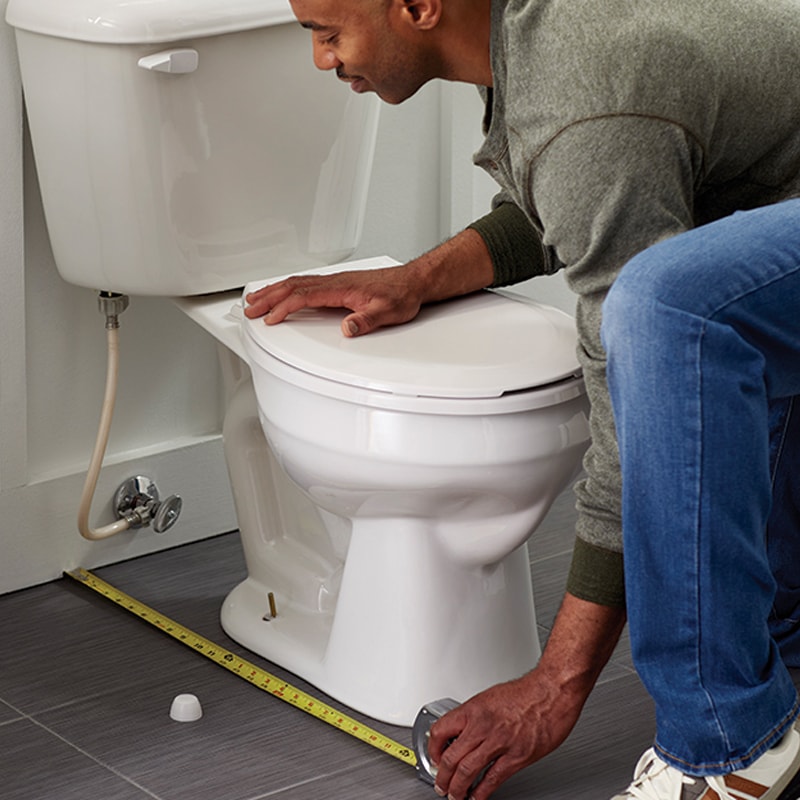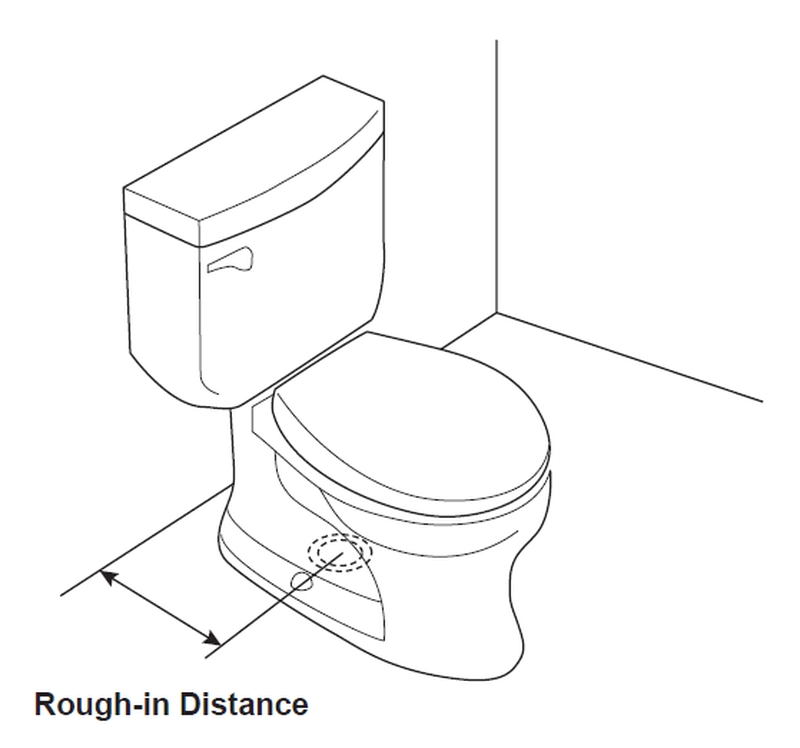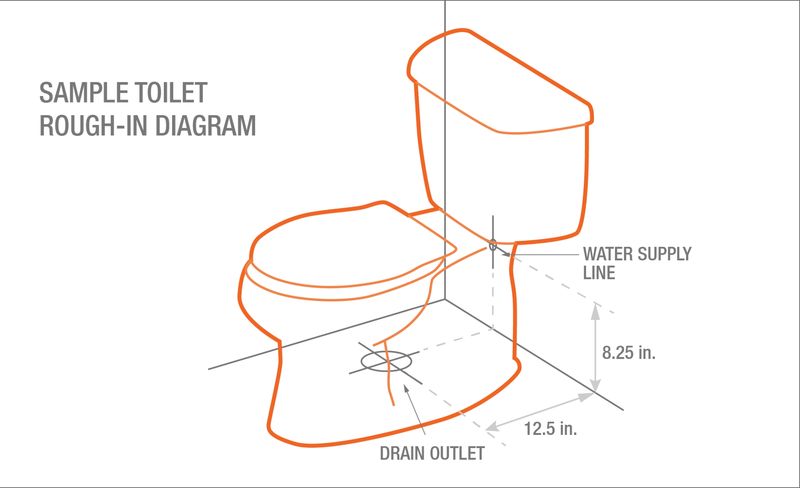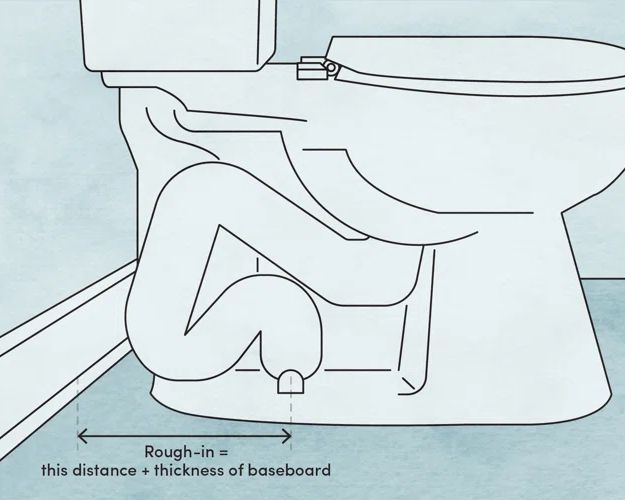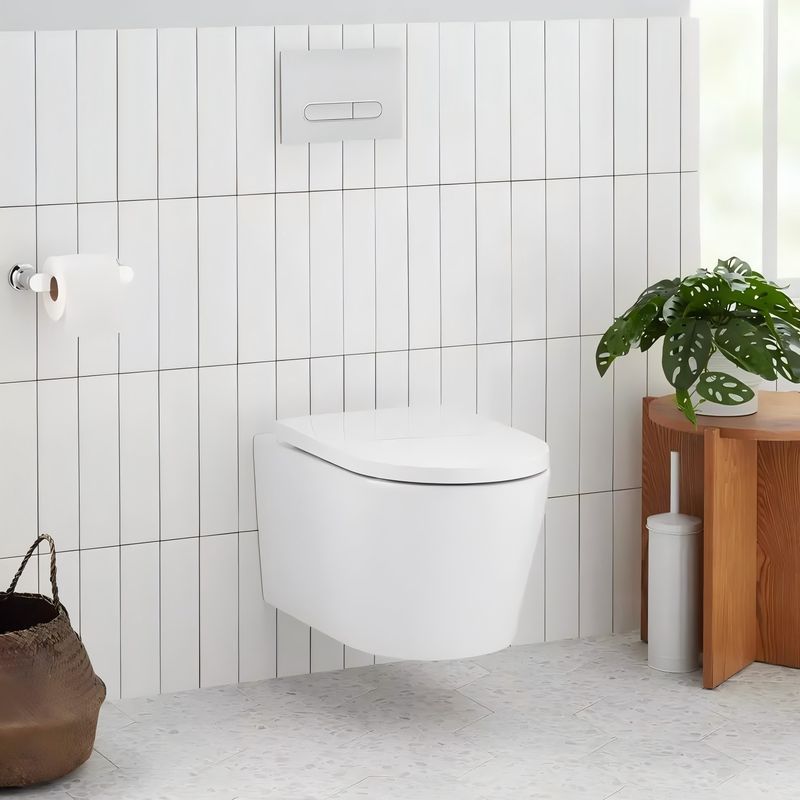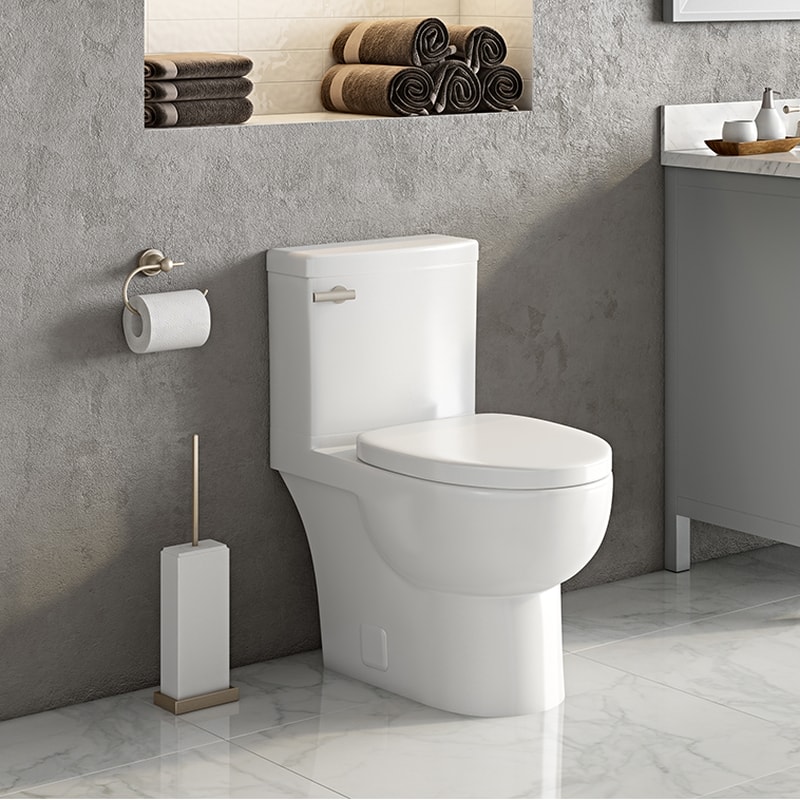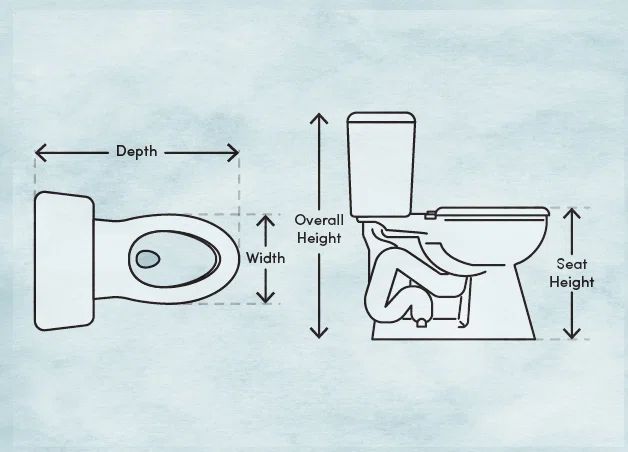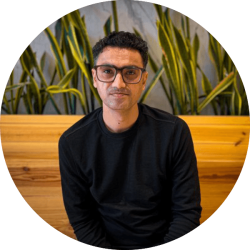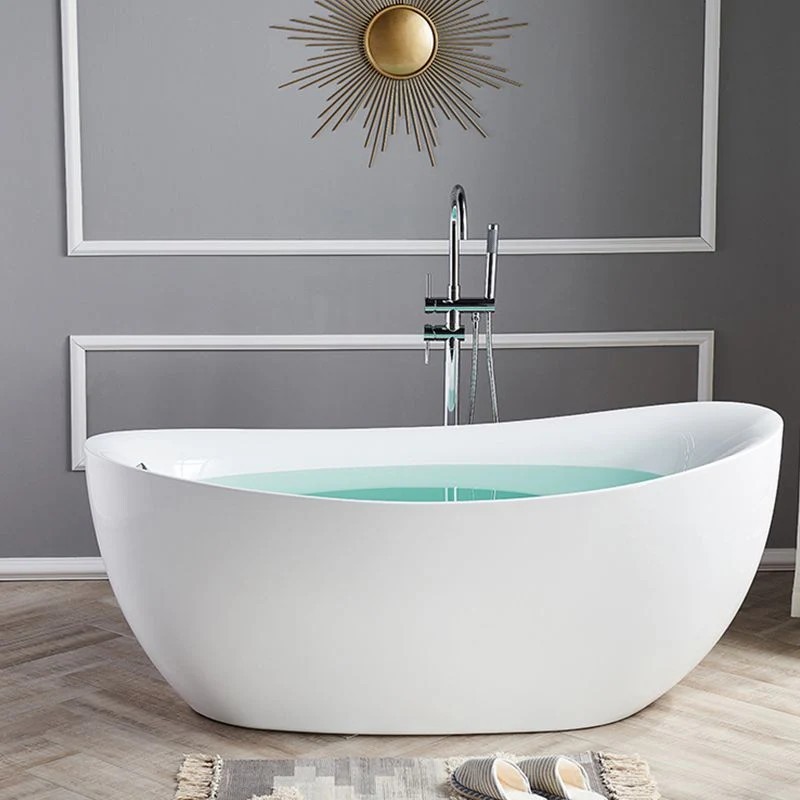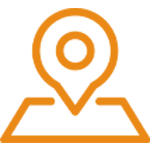 English
English
Jabra Sanitary is a sanitaryware supplier offering toilets, sinks, faucets, bathtubs, etc., at competitive prices. If you're a distributor, wholesaler, or project contractor, get a quote today!
 $23.9 Limited-time Offer
$23.9 Limited-time Offer Consignment Policy
Consignment Policy 20 Years of Experience
20 Years of Experience
When it comes to bathroom renovations or replacing an old toilet, one crucial step is accurately measuring toilet rough-in. This measurement determines where the toilet will be installed on the wall, ensuring a proper fit and function.
Without knowing the correct rough-in size, you risk purchasing a toilet that doesn't fit, leading to delays and added expenses.
In this guide, we'll walk you through everything you need to know about measuring toilet rough-ins, including what toilet rough in, standard dimensions for toilet rough-in, and how to measure toilet rough-in.
Table of Contents
What Is Toilet Rough In
Standard Dimensions for Toilet Tough-in
How to Measure a Toilet Rough-In Without an Existing Toilet
How to Measure a Standard Toilet Rough-In
How to Measure a Corner Toilet Rough-In
How Do You Measure a Wall-Mount or Rear-Outlet Toilet Rough-In
The Different Toilet Dimensions You Should Know
FAQs
Final Thoughts
Toilet rough-in refers to the distance between the wall behind the toilet and the center of the drainpipe or toilet flange that connects to the floor.
Understanding your toilet rough-in size ensures that the toilet you choose will align correctly with the plumbing.
The most common rough-in size for toilets is 12 inches. This is considered the standard in most modern homes.
However, older properties might have different rough distances for toilets, such as 10 inches <Check the best 10 rough in toilets> or even 14 inches. Knowing your home's toilet rough-in size is essential when shopping for a new toilet.
Two-piece toilets, which have separate tanks and bowls, offer some flexibility when it comes to rough-in sizes. These toilets can be easier to install in spaces where the rough-in-size toilet measurement might not be a perfect 12 inches.
When selecting a two-piece toilet, ensure it matches your toilet rough-in size to avoid complications during installation.
Choosing the right toilet for your rough-in size is crucial. It's always best to measure toilet rough in accurately before making a purchase.
How to Measure a Toilet Rough-In Without an Existing Toilet
How do you measure rough in for a toilet? The steps are as below:
1. Identifying the Location of the Drainpipe
If you don't have a toilet currently installed, measuring the rough-in still requires you to locate the drainpipe or toilet flange.
The toilet flange is the pipe fitting that connects the toilet to the drainpipe, usually attached to the floor.
To start, identify where the drainpipe is situated by finding the toilet flange opening. This is often covered with a cap or a temporary cover if no toilet is present.
2. Measuring from the Bare Wall to the Center of the Toilet Flange
Once you've located the toilet flange, take a measuring tape and measure the distance from the bare wall (not including baseboards or moldings) to the center of the toilet flange opening.
This measurement is your toilet's rough-in size. Be sure to measure straight back from the wall and not at an angle to ensure accuracy.
3. Important Measurement Tips
- Before you begin, realign the bolt caps or any other elements around the flange to ensure your measurements are not obstructed.
- Always measure from the bare wall—ignore any baseboards or skirting boards, as including them can lead to an inaccurate rough-in size.
- If you plan to retain storage racks or other installations above the toilet, make sure to also measure the overall height to ensure everything fits comfortably.
How to Measure a Standard Toilet Rough-In
Measuring a standard toilet rough-in when a toilet is already installed is a straightforward process. You will need a tape measure and possibly a flashlight if visibility is limited.
Step 1: Locate the Bolts
Find the two bolts that hold the toilet to the floor. These are usually located at the base of the toilet, near the bottom of the bowl. They secure the toilet to the flange.
Step 2: Measure from the Wall
With your tape measure, measure from the bare wall behind the toilet (excluding any baseboards) to the center of one of the bolts. This measurement is typically your toilet's rough-in size.
If the rough-in size toilet measurement is around 12 inches, you have a standard rough-in. If it's closer to 10 or 14 inches, your toilet rough-in size will differ, and you'll need to ensure any replacement toilet matches this dimension.
Step 3: Double-Check Your Measurement
It's always a good idea to measure from both sides of the toilet to ensure accuracy. Consistent measurements from both sides confirm that your toilet is properly aligned with the drainpipe and will guide you in choosing the correct size for a replacement toilet.
How to Measure a Corner Toilet Rough-In
Corner toilets are designed to fit into the corner of a bathroom, maximizing space in smaller areas. Measuring a rough-in for a corner toilet is slightly different but still straightforward.
Step 1: Find the Drainpipe Center
Identify the center of the drainpipe or toilet flange just as you would with a standard toilet. This will be the point from which you measure.
Step 2: Measure from Both Walls
Measure the distance from the center of the drainpipe to each wall that the toilet will sit against. These measurements are critical as they determine whether the toilet will fit properly in the corner.
Unlike standard toilets, you'll need two measurements: one from each wall to the drainpipe center.
Step 3: Check the Angle
Make sure to measure at a right angle to ensure that your toilet will sit flush against both walls. Any deviation from a 90-degree angle could result in the toilet not fitting properly or looking misaligned.
How Do You Measure a Wall-Mount or Rear-Outlet Toilet Rough-In
Measuring for Wall-mount Toilets
Wall-mount toilets are designed to save space and offer a modern aesthetic by attaching directly to the wall, leaving the floor space beneath them open.
These toilets require a different type of rough-in-size toilet measurement since the plumbing is situated within the wall rather than the floor.
To measure for a wall-mounted toilet rough-in, you'll need to determine the distance from the floor to the plumbing outlet in the wall and the distance from the wall to the center of the outlet.
It's essential to follow the toilet manufacturer's guidelines for wall-mount toilet installations, as these measurements can vary significantly from standard floor-mounted models.
Measuring for Rear-Outlet Toilets
Rear-outlet toilets, also known as back-outlet toilets, connect to the plumbing through the wall rather than the floor. These are common in buildings with concrete floors where floor drains are impractical.
Measuring the rough-in for a rear-outlet toilet involves checking the distance from the floor to the center of the outlet pipe in the wall and ensuring it aligns with your existing plumbing.
Like wall-mount toilets, rear-outlet models require careful attention to the manufacturer's specifications to ensure proper fit and function. These toilets often require more precise measurements than standard toilets due to the fixed position of the plumbing in the wall.
The Different Toilet Dimensions You Should Know
Toilet Height
Toilet height is a critical dimension, especially for comfort and accessibility.
The standard height for most toilets is around 15 to 17 inches from the floor to the top of the seat.
However, comfort-height toilets, which are typically around 17 to 19 inches, are becoming more popular, especially in homes where accessibility is a concern.
Toilet Depth
Toilet depth refers to the distance from the back of the toilet to the front edge of the bowl. This dimension affects how much space the toilet will occupy in your bathroom.
Standard toilets typically have a depth of about 28 to 30 inches, while compact models designed for small bathrooms can be as short as 25 inches. Always consider the depth of the toilet, especially if space is limited in your bathroom.
Toilet Rough-In
The rough-in measurement is the distance from the wall to the center of the toilet's drainpipe or flange. As mentioned earlier, this dimension is crucial for ensuring that the toilet will fit properly and align with the plumbing.
Standard rough-in sizes are 12 inches, but 10-inch and 14-inch rough-ins are also available for older or custom homes.
Proper Clearance Surrounding Your Toilet
Adequate clearance around the toilet is necessary for both comfort and compliance with building codes.
Typically, there should be at least 15 inches of clearance from the center of the toilet to any side wall or obstruction. This space ensures that the toilet is easy to use and meets safety standards.
Clearance from the Front of the Toilet
Building codes generally require a minimum of 21 inches of clearance from the front of the toilet to any fixture, wall, or door in front of it. For a more comfortable bathroom experience, consider increasing this clearance to 24 inches or more.
This extra space allows for easier movement in and out of the bathroom and reduces the feeling of being cramped.
Toilet Dimensions |
How to Measure |
Standard Dimensions |
|---|---|---|
Toilet Height |
The distance between the toilet rim and the floor |
14.5 to 19 inches |
Toilet Depth |
The distance between the front of the toilet bowl rim and the back of the toilet |
27 to 30 inches |
Toilet Width |
The distance from the left to the right edge of the toilet tank or toilet seat, whichever is widest |
20 inches |
Rough-In |
The distance between the center of the closet bolts and the toilet's wall |
10, 12, and 14 inches |
FAQs
Can I Replace a 10-Inch Rough-In with a 12-Inch Rough-In?
In most cases, replacing a 10-inch rough-in with a 12-inch rough-in is not advisable without significant modifications to the plumbing. A 12-inch rough-in toilet will sit 2 inches closer to the wall than a 10-inch model, which may cause issues with space and alignment.
If you need to replace a toilet with a different rough-in size, it's often best to stick with the existing rough-in measurement or consult a plumber for advice.
What Is the Depth Difference Between Round and Elongated Toilets?
Elongated toilets generally have a bowl that is 2 to 3 inches longer than round toilets, offering more comfort, especially for adults. However, this added length means that elongated toilets take up more space, which can be an issue in smaller bathrooms.
When measuring for a toilet, consider how the bowl shape will affect the overall depth and fit of the toilet in your bathroom.
When to look for Professional Help Changing Out a Toilet?
If you're unsure about your ability to measure and install a toilet correctly, it's a good idea to consult a professional plumber.
Professional help can ensure that the toilet is installed properly, avoiding potential issues with leaks, misalignment, or improper fitting that could arise from incorrect measurements or installation.
Final Thoughts
Accurately measuring your toilet rough-in is a crucial step in ensuring that your new toilet fits perfectly and functions as expected. Whether you're dealing with a standard, corner, wall-mount, or rear-outlet toilet, understanding the specific rough in size for toilet is essential.
Taking the time to measure correctly will save you from potential headaches down the line, such as having to return a toilet that doesn't fit or dealing with installation issues.
When in doubt, don't hesitate to seek professional help, especially if you're replacing a toilet with a different rough-in size or installing a more complex model.
Good luck with your project! For more useful information, check out our Ultimate Guide to Toilets or How to Choose the Right Toilet to help you explore the available options while shopping for a new toilet.







